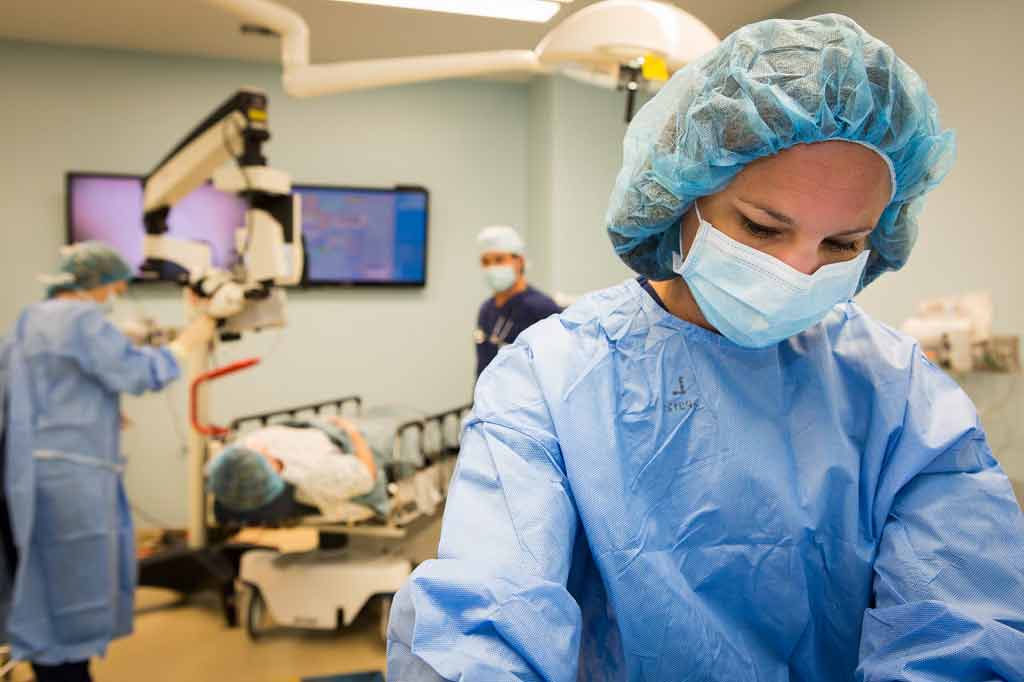Knee surgery versus physiotherapy
Medical practice
“Knee surgery to treat osteoarthritis may be a waste of time and money”, said The Daily Telegraph today. It explained that the results of new research suggest that
“Knee surgery to treat osteoarthritis may be a waste of time and money”, said The Daily Telegraph today. It explained that the results of new research suggest that physiotherapy and painkillers are just as effective. In this Canadian study, patients who had either arthoscopic surgery or physiotherapy had similar improvements in joint pain and stiffness, and surgery had “no extra benefit”.
The story is based on well-conducted study. It provides definitive evidence that when added to conventional physical therapy and medication there is no additional benefit for surgery. The results are corroborated by a recently published Cochrane review, one of the most reliable forms of evidence available, which looked at several similar studies and came to the same conclusion. The researchers suggest that resources used for treating osteoarthritis athroscopically would be better spent elsewhere. It should be noted that the study did not look at the effectiveness of arthroscopy at diagnosing osteoarthritis.
Where did the story come from?
Dr Alexandra Kirkley and colleagues from the Fowler Kennedy Sport Medicine Clinic and other departments at the University Of Western Ontario and St. Joseph’s Health Care in London, Ontario, Canada carried out the research. The study was supported by the Canadian Institutes of Health Research. The study was published in the peer-reviewed medical journal: The New England Journal of Medicine.
What kind of scientific study was this?
This was a randomised controlled trial designed to investigate how well arthroscopic surgery for the treatment of moderate-to-severe osteoarthritis of the knee compares to other treatment. The researchers say that although arthroscopic surgery is widely used for osteoarthritis of the knee, there is little evidence of how effective it is.
The study was conducted between January 1999 and August 2007 at a sport medicine clinic at the University of Western Ontario, Canada. During this time, there were 277 patients who could take part in the study. Eligible participants were all aged 18 or older with grade two, three, or four osteoarthritis. This score is measured on radiographic severity using a modified Kellgren–Lawrence classification (a recognised objective measure of the severity of osteoarthritis). The researchers excluded anyone who had suspected large tears to the cartilage on clinical examination or magnetic resonance imaging, those who had other types of arthritis or previous arthroscopic treatment for knee osteoarthritis, major trauma or neurological problems, serious medical illness or were pregnant. People who were unable to provide informed consent or were thought unlikely to agree to follow-ups were also excluded, and some declined to take part.
From those that were eligible, 188 patients were randomly assigned to either a group that had surgical intervention or a group that had physical and medical therapy alone. The 94 people assigned to the surgical group received lavage and arthroscopic debridement (essentially a washing out of the joint space followed by arthroscopic removal of any loose cartilage) together with optimised physical and medical therapy. The 94 people who received physical and medical therapy alone were the control group. Some people in each assigned group withdrew consent, declined surgery or failed to complete the study.
The ‘optimised physical and medical therapy’ consisted of an identical program in both groups. This involved physical therapy for an hour, once a week for 12 weeks, a home exercise program (involving a range-of-motion and strengthening exercises), and instruction regarding walking, use of stairs and treatments involving cold and heat. The home exercises were performed twice daily and once on the day of a scheduled physical therapy session. After 12 weeks, the patients continued an unsupervised exercise program at home for the duration of the study. They also received additional education from local Arthritis Society workshops and a copy of The Arthritis Helpbook and a video.
Patients were seen in the clinic at 3, 6, 12, 18, and 24 months after the initiation of treatment. At each visit, they were evaluated by a nurse and their medical treatment was reviewed. The researchers measured several aspects of pain and function. Their main interest was the total Western Ontario and McMaster Universities Osteoarthritis Index (WOMAC) score at two years. This index ranges from zero to 2400, with higher scores indicating increased pain and stiffness and decreased physical function. A 20% improvement (typically, a decrease of about 200 points in the total WOMAC score) was considered clinically important. The researchers also looked at another type of “patient reported outcome” using the Short Form-36 health questionnaire (SF-36) that also looked at the physical aspects of the patient’s quality of life. This has a range from zero to 100 with higher scores indicating better quality of life.
What were the results of the study?
Eight patients in each group either withdrew consent or declined surgery leaving 86 patients in each group. After two years, the average WOMAC score for the surgery group was 874 compared to 897 for the control group. This is an absolute difference of 23 between the groups and was not statistically significant after the researchers took into account the patient’s scores and the severity of their osteoarthritis at the beginning of the study. The difference also did not meet the researchers’ definition of clinically important (they had decided this would be a 200 point difference on this scale). The SF-36 physical component scores were 37.0 for the surgical group and 37.2 for the control group, a difference that was also not statistically, or clinically, significant.
What interpretations did the researchers draw from these results?
The researchers concluded that “arthroscopic surgery for osteoarthritis of the knee provides no additional benefit to optimized physical and medical therapy”.
What does the NHS Knowledge Service make of this study?
This well-designed study provides reliable evidence that these two treatments have the same benefits for treating osteoarthritis of the knee. The authors acknowledge a few difficulties:
- Trials of surgical interventions are prone to bias because it is rarely possible to have a true placebo group, in other words a group of people who think they are having surgical treatment, when in fact they are not. In this case, a “sham-surgery” control could have given a more accurate idea of the effectiveness of arthroscopic knee surgery, but this would probably have been considered unethical given the possible harms. However, the authors note that even if sham surgery had been used, it is most likely that the difference between the groups would have been even less.
- A further limitation noted by the researchers, is that only 68% of the patients considered for inclusion in the study were thought to be eligible and ultimately assigned to treatment. The main reason given for this was substantial mal-alignment of the joint (38%) or that the patient did not want to take part (35%). The authors argue that the exclusions were appropriate for selecting patients and were designed to maximise the chances of identifying a benefit of surgery. However, the reduced numbers may also have reduced the chance of detecting an effect.
- The intervention used for comparison in this case was “optimal physical and medical therapy” and it is worth noting how intensive this treatment was, with twice-daily home exercises, a book and videotape, and once-weekly physiotherapy for 12 weeks. Both groups had the same exercise programme, and if the group that received surgery did not follow the programme as stringently as the control group, then the control group would have appeared to be more effective than it would otherwise.
In general, this study supports a conservative approach to the treatment of osteoarthritis. Although it only had a small number of participants, it does highlight that the effectiveness of this treatment is questionable. Its findings are corroborated by a 2008 Cochrane review that included three other randomised controlled trials with different patient groups and one trial of arthroscopic debridement compared to sham surgery. It concluded that “there is 'gold'-level evidence that arthroscopic debridement has no benefit for undiscriminated osteoarthritis (mechanical or inflammatory causes)”.
Sir Muir Gray adds...
This is an important study, but the topic is too complex for any one study to resolve. Let’s see all the research on this topic.






 Subscribe
Subscribe Ask the doctor
Ask the doctor Rate this article
Rate this article Find products
Find products








